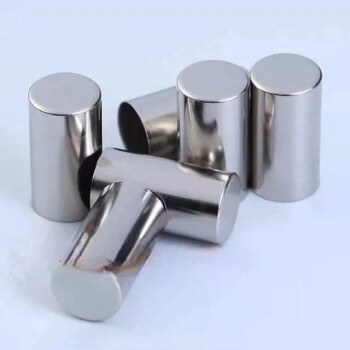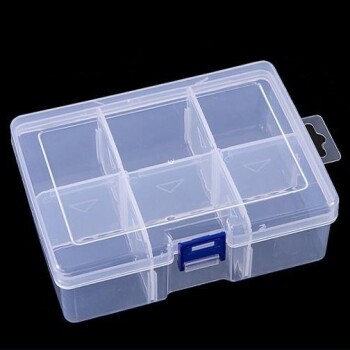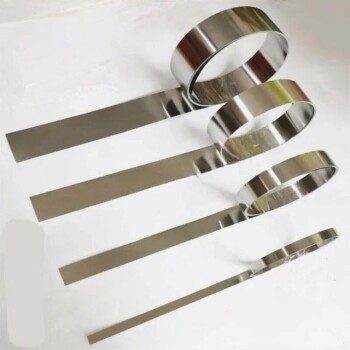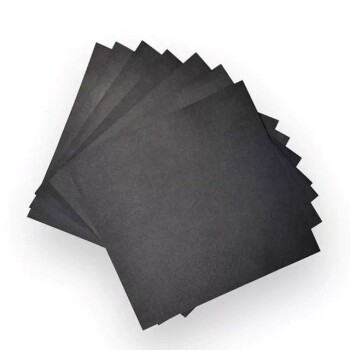Our battery materials cater to a wide range of applications, from cylindrical and pouch batteries to lithium-ion and nickel batteries. We offer high-quality components like cylindrical battery steel cases, nickel-aluminum tabs, and aluminum-plastic flexible packaging films, ensuring superior performance and safety in your battery solutions.
Toggle Categories
Get Instant Support
Choose your preferred way to connect with our team
-
Get Free Quote Fill out form for detailed pricing
-
Send Email Detailed inquiry support
-
WhatsApp Quick mobile chat
Response Time
Within 8 hours on working days, 24 hours on holidays
battery material

Rotary Tube Furnace Split Multi Heating Zone Rotating Tube Furnace
Item Number : KT-MRTF

Graphite Vacuum Furnace Negative Material Graphitization Furnace
Item Number : GF-04

Battery Lab Equipment Battery Capacity and Comprehensive Tester
Item Number : BC-06

Cylindrical Battery Steel Case for Battery Lab
Item Number : BC-03

Button Battery Storage Box for Battery Lab
Item Number : BC-10

Battery Lab Equipment 304 Stainless Steel Strip Foil 20um Thick for Battery Test
Item Number : BC-14

Hydrophilic Carbon Paper TGPH060 for Battery Lab Applications
Item Number : BC-16
Battery Material Solutions for Enhanced Performance and Safety
In the rapidly evolving world of battery technology, selecting the right materials is crucial for achieving optimal performance, longevity, and safety. Our comprehensive range of battery materials is designed to meet the stringent demands of various battery types, including lithium-ion, nickel-cadmium, and lead-acid batteries. Whether you're manufacturing cylindrical, pouch, or button batteries, our products are engineered to deliver exceptional results.
Key Features and Advantages
- Superior Performance: Our materials, such as the cylindrical battery steel case and nickel-aluminum tabs, are designed to suppress battery polarization, reduce thermal effects, and improve rate performance. This ensures that your batteries operate efficiently under various conditions.
- Enhanced Safety: The aluminum-plastic flexible packaging film for lithium battery packaging is a prime example of our commitment to safety. Unlike metal case batteries, pouch batteries wrapped in this film are inherently safer, offering excellent electrolyte properties and preventing deformation of internal materials.
- Customizable Solutions: We understand that every battery application is unique. That's why we offer a wide range of customizable options, from conductive carbon cloth and carbon paper to lithium cobaltate sputtering targets. Our team of experts is ready to assist you in selecting the perfect materials for your specific needs.
- Professional Expertise: Our deep understanding of battery technology allows us to provide not just materials, but comprehensive solutions. From the initial consultation to the final product, we are committed to ensuring that your battery projects succeed.
Applications and Industries
Our battery materials are widely used in various industries, including:
- Electronics: For manufacturing high-performance batteries in consumer electronics.
- Automotive: Supporting the development of electric vehicles and hybrid cars.
- Energy Storage: Enabling efficient and reliable energy storage systems.
- Aerospace: Providing lightweight and durable battery solutions for space exploration.
Why Choose Us?
- Quality Assurance: All our products undergo rigorous testing to ensure they meet the highest standards of quality and performance.
- Innovation: We continuously invest in research and development to bring you the latest advancements in battery technology.
- Customer Support: Our dedicated team is here to support you every step of the way, from product selection to after-sales service.
Get in Touch
Ready to elevate your battery projects with our premium materials? Contact us today to discuss your needs and explore our customizable solutions. Let's work together to create the next generation of battery technology.
FAQ
What Are The Main Types Of Battery Materials?
What Are The Applications Of Battery Materials?
How Do Battery Materials Enhance Battery Performance?
What Is The Role Of Polyethylene Separators In Lithium-ion Batteries?
Why Are Conductive Carbon Cloths/papers/felts Important In Battery Applications?
What Are The Advantages Of Using Aluminum-plastic Flexible Packaging Films For Lithium Batteries?
How Does The Lithium Cobaltate Material Contribute To Battery Performance?
What Is The Function Of Battery Internal Resistance Testers?
Why Are Nickel-aluminum Tabs Important In Battery Manufacturing?
REQUEST A QUOTE
Our professional team will reply to you within one business day. Please feel free to contact us!
Related Articles

Why Your Ashing Tests Fail: The Hidden Difference Between Muffle and Ashing Furnaces
Frustrated by inconsistent ashing results? Discover the critical difference (it's not temperature) and how the right furnace ensures accuracy.

Why Your High-Temperature Experiments Fail: The Furnace Flaw Most Labs Overlook
Struggling with cracked parts or inconsistent material properties? Discover the hidden furnace flaws, like poor thermal uniformity, that cause failures and how to solve them for good.

Why Your Brazed Joints Keep Failing: The Invisible Saboteur in Your Furnace
Struggling with inconsistent brazed joints? Discover the invisible culprit in your furnace—the atmosphere—and learn how to fix it for good.

The Silent Saboteur in Your Furnace: Why Your Heat Treatment Fails and How to Fix It
Tired of inconsistent heat treatment results? Discover the real reason your parts fail and learn how to gain control by mastering your furnace atmosphere.

The Silent Variable: Engineering Reliability in Electrolytic Cells
Data accuracy depends on equipment integrity. Learn the engineering protocols for maintaining electrolytic cells to prevent systemic error.

Muffle vs. Tube Furnace: How the Right Choice Prevents Catastrophic Lab Failure
Choosing the wrong lab furnace can ruin weeks of research. This guide clarifies the critical differences between muffle and tube furnaces to ensure your success.

The Geometry of Control: Why the Tube Furnace is Science’s Precision Tool
Tube furnaces offer unmatched thermal uniformity and atmospheric control. Discover the engineering logic behind these precision instruments.

Your Induction Furnace Is Failing You. The Reason Isn't What You Think.
Struggling with inconsistent melts or high costs? The problem may be a fundamental mismatch in your induction furnace type. Learn to fix it.

The Architecture of Control: Why Thermal Stability Defines Electrolysis Success
Discover how double-layer water-bath electrolytic cells eliminate thermal variables, ensuring accuracy and reproducibility in electrochemical research.

The Invisible Geography of Heat: Why "Max Temperature" is a Trap
In thermal processing, maximum temperature is often a vanity metric. Discover why the "Uniform Heated Zone" is the true architect of repeatability.

Your Electric Furnace Can't Melt Steel? Here's the Scientific Reason Why.
Struggling to melt steel in your lab? Discover the critical scientific difference between resistance and induction heating and why one fails where the other succeeds.

Why Your Ceramic Furnace Tubes Keep Cracking—And How to Choose the Right One
Tired of failed experiments from cracked ceramic tubes? Learn the real reason it happens and how to select the correct material (Alumina, Quartz) for your lab.

Why Your Induction Furnace Fails with Aluminum—And How to Fix It for Good
Struggling to melt aluminum? Discover the hidden physics behind inconsistent results and learn how the right high-frequency induction furnace solves it.

Cracked Tubes, Contaminated Samples? Your Furnace Tube Is The Hidden Culprit
Frustrated by failed experiments? Learn why your furnace tube material—not your process settings—is the critical variable causing inconsistent results.

Muffle vs. Tube Furnace: How One Choice Prevents Costly Research Failures
Choosing between a muffle and tube furnace is critical. Learn the core difference to avoid ruining experiments and wasting your lab's budget.

From Crack to Complete: A Scientist's Guide to Eliminating Catastrophic Tube Furnace Failures
Prevent costly tube furnace bursts. Learn the key causes like thermal shock and material incompatibility, and discover the right strategy to ensure safety and data integrity.

AI completes muffle furnace scientific research graphing in one minute.
How to use nano banana to create scientific illustrations

How Vacuum Induction Melting Elevates High-Performance Alloy Production
Discover how Vacuum Induction Melting (VIM) enhances alloy purity, reduces defects, and optimizes costs for aerospace and energy sectors.

Preserving the Irreplaceable: How ULT Freezers Protect Critical Samples Across Industries
ULT freezers at -80°C protect biological samples, vaccines, and research materials from degradation, ensuring long-term viability across industries.

Polytetrafluoroethylene (PTFE): How low friction coefficient promotes industrial progress
Explore the unique advantages of polytetrafluoroethylene (PTFE)'s low coefficient of friction and analyze how it promotes progress and innovation in industrial technology in terms of reducing wear and improving equipment efficiency.

